Yes, barnacles are real and alive. These tiny organisms are related to crabs and shrimp, and they live attached to a surface—such as rocks, logs, other marine creatures, and even boats. When they attach themselves, their bodies expand into a cone-shaped shell that keeps them safe from predators.
Now, about these tiny creatures, so many questions are there. For example, are they poisonous, how do they die, and so on? In this article, I will answer these questions in detail.
How Do Barnacles Stay Alive?
Barnacles are a type of crustacean that belongs to the taxonomic family Balanidae. They are incredibly resilient and can survive in harsh marine environments. They stay alive by filtering food particles from the water, which they consume using their feathery limbs called cirri.
Barnacles have a unique life cycle that comprises six distinct stages. The larval stage is the first stage when they hatch from eggs and start swimming in the water. In the second stage, they undergo metamorphosis and settle down on a hard surface, such as rocks, docks, or ships.
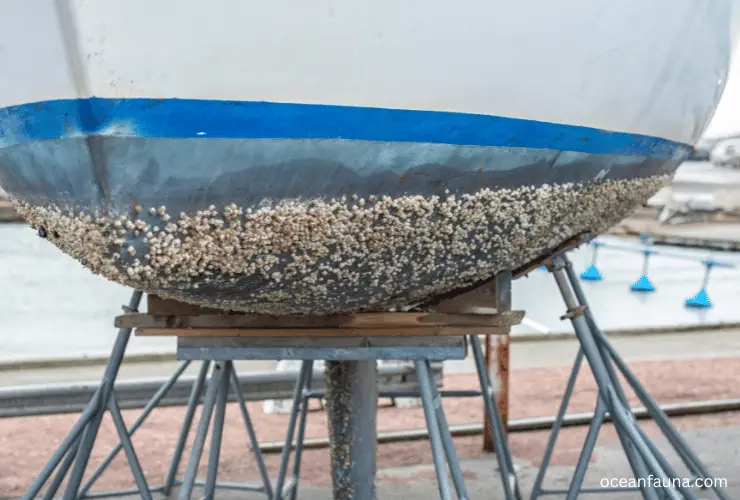
In the third stage, barnacles start secreting calcium plates that encase them and protect them from predators. This process is known as calcification and continues throughout its life cycle. The barnacle continues to grow, and as it grows, it secretes more and more calcium plates.
Barnacles are filter feeders, meaning they consume tiny organisms such as plankton, bacteria, and algae in the water. They use their cirri to filter food particles from the water and trap them in their feeding apparatus. Once trapped, the food is transferred to the mouth for ingestion.
The lifespan of barnacles depends on the species and the environmental conditions. Some species can live up to 20 years, while others may live for only a few years. To survive, barnacles need to have access to food and water. They are adapted to withstand harsh conditions such as extreme temperatures, wave action, and exposure to air during low tide.
Reproduction System of Barnacles
Barnacles have a unique and fascinating reproductive system that involves the transfer of sperm from one individual to another. As mentioned before, these marine creatures are hermaphrodites, meaning that they possess both male and female reproductive organs. However, they cannot fertilize their own eggs and require a mate for reproduction.
When a barnacle is ready to reproduce, it extends its penis (yes, barnacles have penises) through an opening in its shell, also known as the operculum. The penis then makes contact with a nearby barnacle, and the transfer of sperm occurs. It should be noted that the exact mechanism of sperm transfer in barnacles varies among different species.
Once the eggs of the female barnacle are fertilized, they are released into the water and develop into planktonic larvae. These larvae go through several developmental stages before eventually becoming juvenile barnacles.
At this point, they are free-swimming and can disperse to new locations to settle and start their own colony.
Interestingly enough, barnacles are also known for their ability to change their gender. Some species start their lives as males and eventually develop into females. This change is believed to occur in response to environmental cues, such as the number of barnacles in a colony or food availability.
Are Barnacles Poisonous?
I go through different research papers to check the toxicity of barnacles. I found that barnacles are not poisonous. Instead, they are consumed in high numbers worldwide. Also, these organisms are edible in raw.
Barnacles are crustaceans that are typically found attached to rocks, ships, and other substrates in marine environments. While they may look unappetizing to some, they are actually considered a delicacy in certain parts of the world.
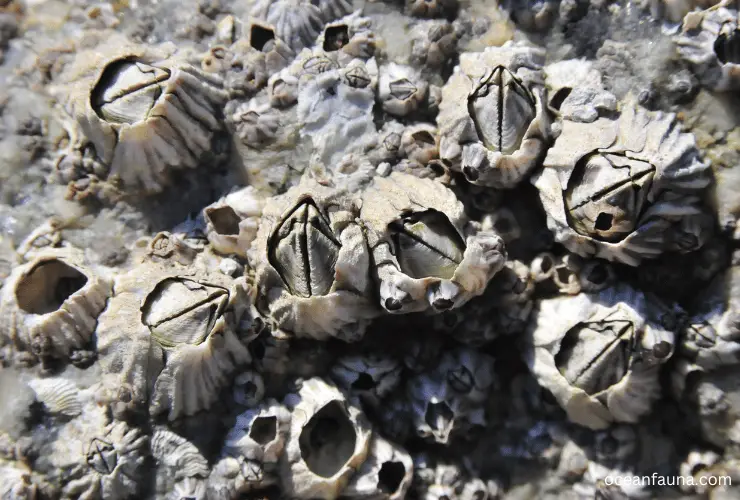
People have been consuming barnacles for centuries, and no reports of toxicity or adverse effects have been reported. They are a good source of protein, vitamins, and minerals and are enjoyed in a variety of dishes, including soups, stews, and salads.
While barnacles are not poisonous, their environment can sometimes contain harmful toxins. For example, some phytoplankton species can produce harmful algal blooms containing toxins like saxitoxin, accumulating in shellfish and other filter feeders, including barnacles.
However, this is not a problem unique to barnacles and is an issue for many kinds of seafood.
Needless to say, some barnacles can be parasitic. They can feed on other creatures, even on humans. Whatever it is, they are not poisonous.
Do Barnacles Feel Pain?
There is a debate among people that crustaceans don’t feel pain, since they are brainless. But, recent study shows, barnacles like other crustaceans may not seem like very sophisticated creatures, but they can actually sense and react to their surroundings in a variety of ways.
However, still it is difficult to give a definite answer to the topic of whether or not barnacles feel pain. Vertebrates and a few invertebrates are the only animals known to have a neural system sophisticated enough to register pain. On the other hand, barnacles’ little ganglion or nerve cluster is all they need to coordinate their most fundamental physiological processes.
Barnacles don’t have the specialised pain receptors that other animals do, but they do have mechanoreceptors, which allow them to detect and react to mechanical stimuli like touch and pressure.
Certain parts of their body, including as the cirri (feathery appendages used for filter-feeding) and the muscular base that attaches them to surfaces, are densely packed with mechanoreceptors.
Barnacles respond behaviorally in predictable ways when they are exposed to stimuli like touch or physical disturbances. They have the ability to retract their cirri and close the opercular plates that cover their bodies for protection. Barnacles appear to be sensitive to their surroundings based on their reactions.
These reactions, though, are largely reflexive, and they’re probably connected to survival systems rather than a conscious perception of pain. It is difficult to confirm or refute that barnacles feel pain, however they are unlikely to do so due to their lack of specialized pain receptors and very rudimentary neurological system.
How Long Does a Barnacle Live?
Barnacles, which are small marine crustaceans, have a remarkable lifespan, given their tiny size. On average, barnacles can live for anywhere between 8 to 20 years, depending on various factors such as their species, environment, and other external conditions.
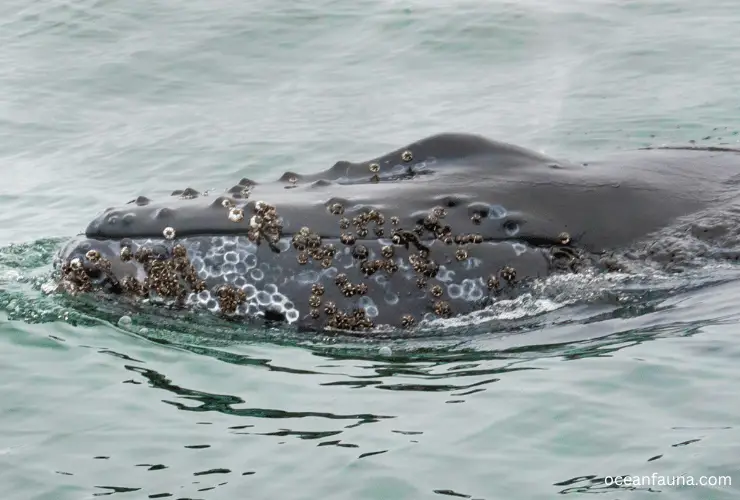
Barnacles have evolved over time to adapt to their specific habitats, which are typically rocky shorelines, jetties, and wharves. They have a unique feeding mechanism, where they filter feed using their modified legs, extending out of their protective, calcified shells.
One primary factor influencing a barnacle’s lifespan is its environment. Barnacles in areas with warmer water temperatures tend to live shorter lives compared to those in colder waters. High pollutants and other contaminants in the water can also negatively affect their lifespan.
Another factor that affects the lifespan of a barnacle is its species. The smaller species of barnacles tend to have a shorter lifespan, while the larger species can live longer. For instance, the acorn barnacle, which is one of the common species of barnacles found along rocky shores, lives for an average of 5 to 10 years.
In addition to their natural habitat, barnacles are also susceptible to predation from various marine organisms. For instance, some species of snails, sea stars, and crabs can prey on barnacles, reducing their lifespan.
What are the oldest barnacles ever?
The oldest known fossil barnacle is Praelepas, which is from the mid-Carboniferous period and dates back to around 330-320 million years ago. This fossil was discovered in England and has been described as “a remarkably preserved example of a fossil barnacle.”
Since then, various species of barnacles have appeared in the fossil record, some dating back to the late Jurassic period (around 156 million years ago). The oldest living barnacle is believed to be an acorn barnacle (Balanus spp.), which has been observed in the wild for over 20 years.
Barnacles are considered to be a “living fossil” species, as they have not changed in form or function during their long evolutionary history and persist to this day. They are an excellent example of how some species can survive and thrive in even the harshest of environments.
How Do Barnacles Die?
Barnacles, like many sessile organisms, rely heavily on their ability to attach themselves to a substrate for their survival. If a barnacle is dislodged from its substrate, it loses its anchor to the surface and, therefore, cannot survive.
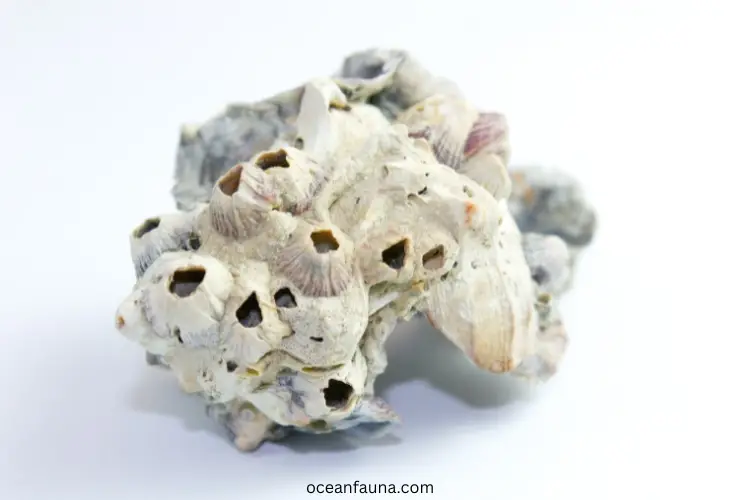
This is because a barnacle’s feeding strategies are highly specialized for extracting nutrients from the water current as it flows past them while they are attached to the substrate.
When a barnacle is removed from the substrate, it cannot effectively filter the surrounding water since it is no longer anchored. The lack of nutrients from the water and the inability to attach themselves to a new substrate ultimately leads to the death of the barnacle.
Additionally, given their limited mobility, barnacles do not possess the capability to seek out a suitable substrate once they have been dislodged, and as a result, it is nearly impossible for them to survive without attachment.
Do Barnacles Live After Being Removed?
No, barnacles do not live after being removed from their substrate. Once dislodged, they are unable to reattach themselves and will eventually die. This is because barnacles rely on attachment to a substrate for survival, as their feeding and reproductive mechanisms are designed for stationary behavior.
Barnacles grow bigger by adding calcium to their shells and by molting them inside the shell. However, this growth is only possible when they are firmly attached to a substrate. They cannot receive the essential nutrients and oxygen needed for survival without attachment.
While it may be possible for some types of barnacles, such as acorn barnacles, to survive if they are wedged between rocks back on the intertidal zone, chances are slim, and they may just end up getting washed away. It is important to note that barnacles are fragile organisms and must be handled carefully to avoid unintentional detachment.
Conclusion
Hopefully, now you are clear that barnacles are real and alive! These organisms have been around since the Carboniferous period and are a testament to their survival ability in even the harshest of environments.
Barnacles are very sensitive creatures and rely heavily on their attachment to a substrate for survival. If they get detached, then, unfortunately, they will not live much longer. So, be mindful when handling them, as the consequences could be dire.
Barnacles can teach us a lot about survival and adaptability, so enjoy observing these creatures in their natural habitats – as long as you know that when they get removed, their survivability decreases significantly.

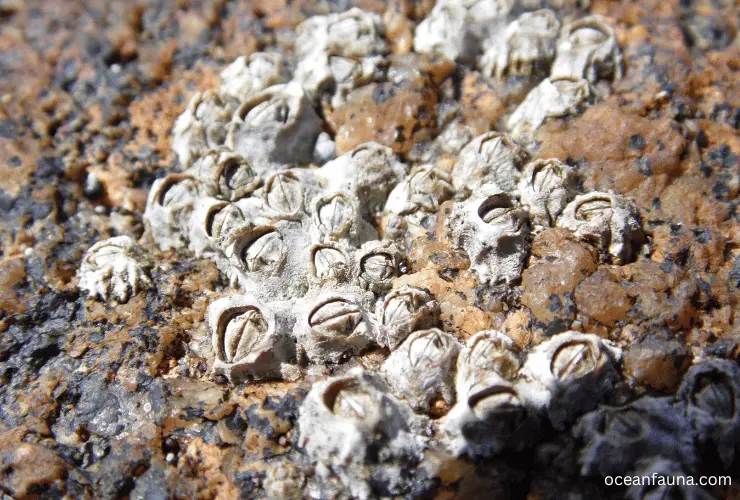
1 thought on “Are Barnacles Alive? [Explained]”